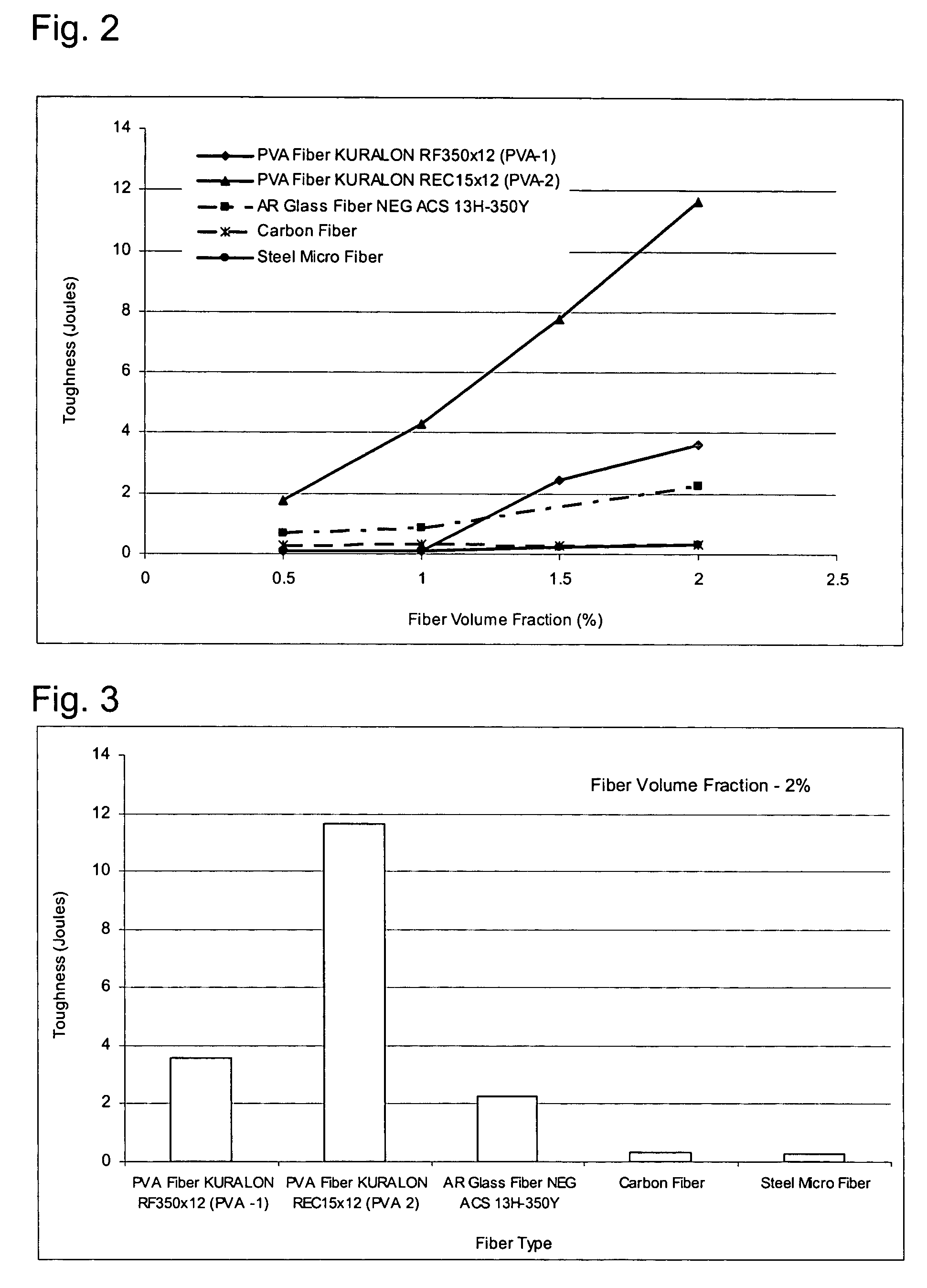Lightweight, fiber-reinforced cementitious panels
a technology of cementitious panels and fiber reinforced cement, which is applied in the direction of climate sustainability, solid waste management, flooring, etc., can solve the problems of not having sufficient flexural toughness, not all building sheathing panels are sufficiently tough to withstand such impact loads, and may be comparable, etc., to achieve good composite performance and significant toughness
- Summary
- Abstract
- Description
- Claims
- Application Information
AI Technical Summary
Benefits of technology
Problems solved by technology
Method used
Image
Examples
examples
[0084] TABLE 6 summarizes properties of six fibers investigated.
TABLE 6Fibers InvestigatedFiberFiberFiberFiberFiberTradeManufac-LengthDiameterSpecificMaterialNameturer(inches)(microns)GravityPolyvinylKURALONKuraray0.50200.01.30AlcoholRF350x12Co., Ltd.PolyvinylKURALONKuraray0.5040.01.30AlcoholREC15x12Co., Ltd.Alkali-NEG ACSNippon0.5013.02.76Resistant13H-350YElectricGlass FiberGlass Co.Carbon FiberFORTAFILFortafil0.257.01.80143FibersSteel MicroCW2-Inter-0.38125.07.85Fiber3750UnationalSteel WoolAcrylicDOLANITFisipe0.24271.18FiberType 18Barcelona,(polymeric)S.A.Polypropyl-STEALTHSynthetic0.50200.91ene FiberIndustries(polymeric)
[0085] All fibers investigated had length equal to or smaller than 0.50 inches (12.7 mm) and diameter equal to or less than 200 microns. The mixture compositions investigated were produced by combining the following ingredients: reinforcing fibers, inorganic binder, lightweight fillers, superplasticizer and water. In total, 19 mixes were investigated. The design...
PUM
| Property | Measurement | Unit |
|---|---|---|
| elastic modulus | aaaaa | aaaaa |
| length | aaaaa | aaaaa |
| length | aaaaa | aaaaa |
Abstract
Description
Claims
Application Information
 Login to View More
Login to View More - R&D
- Intellectual Property
- Life Sciences
- Materials
- Tech Scout
- Unparalleled Data Quality
- Higher Quality Content
- 60% Fewer Hallucinations
Browse by: Latest US Patents, China's latest patents, Technical Efficacy Thesaurus, Application Domain, Technology Topic, Popular Technical Reports.
© 2025 PatSnap. All rights reserved.Legal|Privacy policy|Modern Slavery Act Transparency Statement|Sitemap|About US| Contact US: help@patsnap.com



